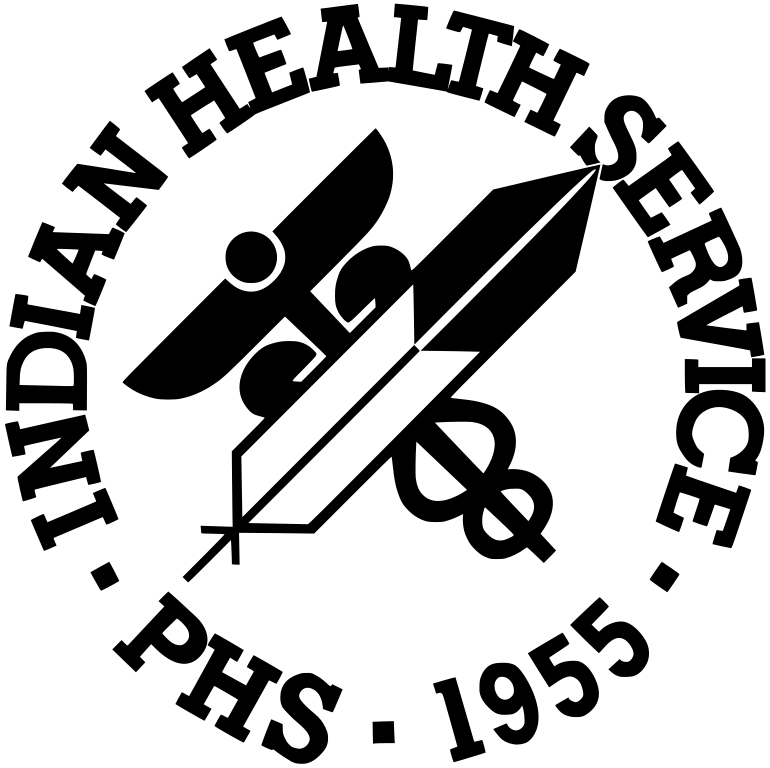Urban Indian Clinic in Denver Helps Clients from Diverse Tribes Lose Weight and Practice Diabetes Self Care
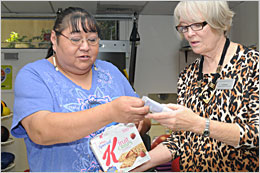
Two women at the Denver Indian Health and Family Services discussing how to lose weight and practice diabetes self care.
It's a typical morning for Allene Stanley (Cheyenne River Sioux). By ten AM she has walked over 1400 steps -- some of them up a hill to get more of an aerobic workout. She has eaten a small orange instead of drinking a glass of orange juice. She has not even thought of having a "Diet Dew" because all soda is gone from her house. Just seven weeks ago, Allene started her days differently. Her eating habits weren't as good and daily exercise was not a habit. But she has been attending the Denver Indian Health and Family Services (DIHFS) program Fork n' Road once a week for almost two months and has changed many of her eating and exercise habits.
Diabetes Program Manager Kathy Canclini, MN, RN, CDE, and other staff of this urban clinic started the program, funded by the Special Diabetes Program for Indians (SDPI) Community Directed Grant Program, in January 2010. The clever name, Fork n' Road, reflects the program's focus of making better lifestyle choices by improving eating habits (fork) and increasing exercise (road) to lose weight and prevent or manage diabetes.
"We had a 91 percent obesity rate," explains Kathy. "The Best Practice we chose was Weight Management. We were inspired by the Best Practice and we used the Division of Diabetes Treatment and Prevention's Balancing Your Life and Diabetes curriculum."
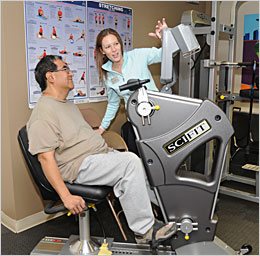
DIHFS staff member showing a client how to use exercise equipment.
Like most urban Indian clinics DIHFS has a client population with characteristics common to Natives living in big cities, diversity being the most prominent. "I would guess that 80 to 90 percent of tribes are represented among our clients, from Native Hawaiians, to Alaska Natives, to members of tribes in Maine" says Kathy. Many of the center's clients do not have health insurance. Some are travelling and some live in Denver for a while, then move.
DIHFS staff view these challenges as positives. "Our clients appreciate meeting other Native people. They appreciate how we sincerely care for them, how we slow things down, taking time to provide many hours of diabetes education classes, as compared to two hours at non-Indian hospitals or clinics. They appreciate how we honor and respect their values."
The foremost value among their clients is family. Diabetes Prevention Specialist Kristen Curcija, MPH, says, as a non-Indian, she has learned a lot about the values of her Native clients. "I have learned how much they value their families and how our teaching has a ripple effect throughout their families. Everyone is so open and sharing. We hear their heartbreaking stories of how diabetes has impacted their cousins, their aunties. After listening, I started to understand the enormity of the love and care our clients have for each other."
In addition to learning about values, staff have learned what works to put on a successful weight loss program at their urban Indian clinic. Here are some of their tips:
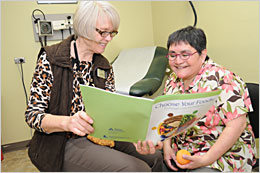
DIHFS staff member reviewing Choose Your Foods: Exchange Lists for Diabetes with a client.
- Use a team approach involving all staff from the clinic and the diabetes program. "The clinic refers patients to us, and we refer clients to the clinic" says Kathy. "We establish a relationship with the clinic patients and they are more likely to come to our classes."
- Develop a program name, logo. Think creatively to name your program and develop your logo – have fun with it! Use the logo on materials to foster an identity for your program. You are welcome to borrow the name and logo Fork n' Road if it will help you market your program.
- Consider creating a contract for staff and clients to sign at start of classes. The DIHFS Fork n' Road Program Behavior Contract includes the statement: I promise to enjoy myself during class.
- Include interactive activities. While waiting for other clients to arrive participants play catch with an inflated "Weight Loss Toss-Up Ball", which has nutrition and exercise questions printed on it. Participants are encouraged to provide the answers.
- Repetition helps. Staff never assume clients know information about nutrition, like how to read labels. They teach, then teach again as needed -- repetition works!
- Expect and celebrate the small changes clients make, like switching from whole milk to skim milk, being able to decrease medications (as ordered by the provider) due to weight loss, wearing smaller-sized clothing, walking around a park and eating more fruits and vegetables. "We are delighted when our clients make eating habit changes and even more excited when we see them smiling, laughing, and feeling better about themselves" says Lorraine Gill, RD, MA, CDE.
- Be delighted by your clients' huge successes, like dramatic drops in A1C, LDLs and lower BMIs. Some DIHFS clients' A1Cs have dropped from 14 percent to under 7 percent!
- Evaluate to show clients' successes. During the first and last classes, clients complete a form developed by the DIHFS Diabetes Program called "Assessment and Evaluation of Healthy Behaviors". Participants give themselves a rating from "rarely" to "regularly" (1-5 Likert scale) regarding nutrition and exercise habits. For Best Practice outcome grant reporting, staff compare before and after class scores. In the last class staff use the SDPI In Review, which asks participants to assess their current habits to show them how much progress they have made and what changes they need to focus on in the future.
- Conduct follow-up assessments. At six and 12 months after the program, clients are re-evaluated for weight, BMI, body measurements and Healthy Behavior Ratings. Again, the team celebrates and/or re-motivates the participant with ongoing support.
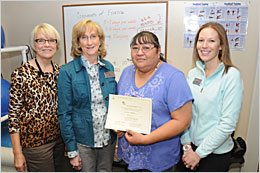
DIHFS staff members posing with a successful Fork n' Road Weight Management Program client.
When clients finish the Fork n' Road Program they are presented with a certificate of graduation and are then eligible to join the Crossroads Program, which focuses on the rest of the Diabetes Self-Management Education. Crossroads is a program primarily offered to clients with diabetes, although all are welcome to attend. Staff chose not to do separate classes for those with diabetes and those without diabetes because nutrition, exercise and behavior change education is applicable to all.
